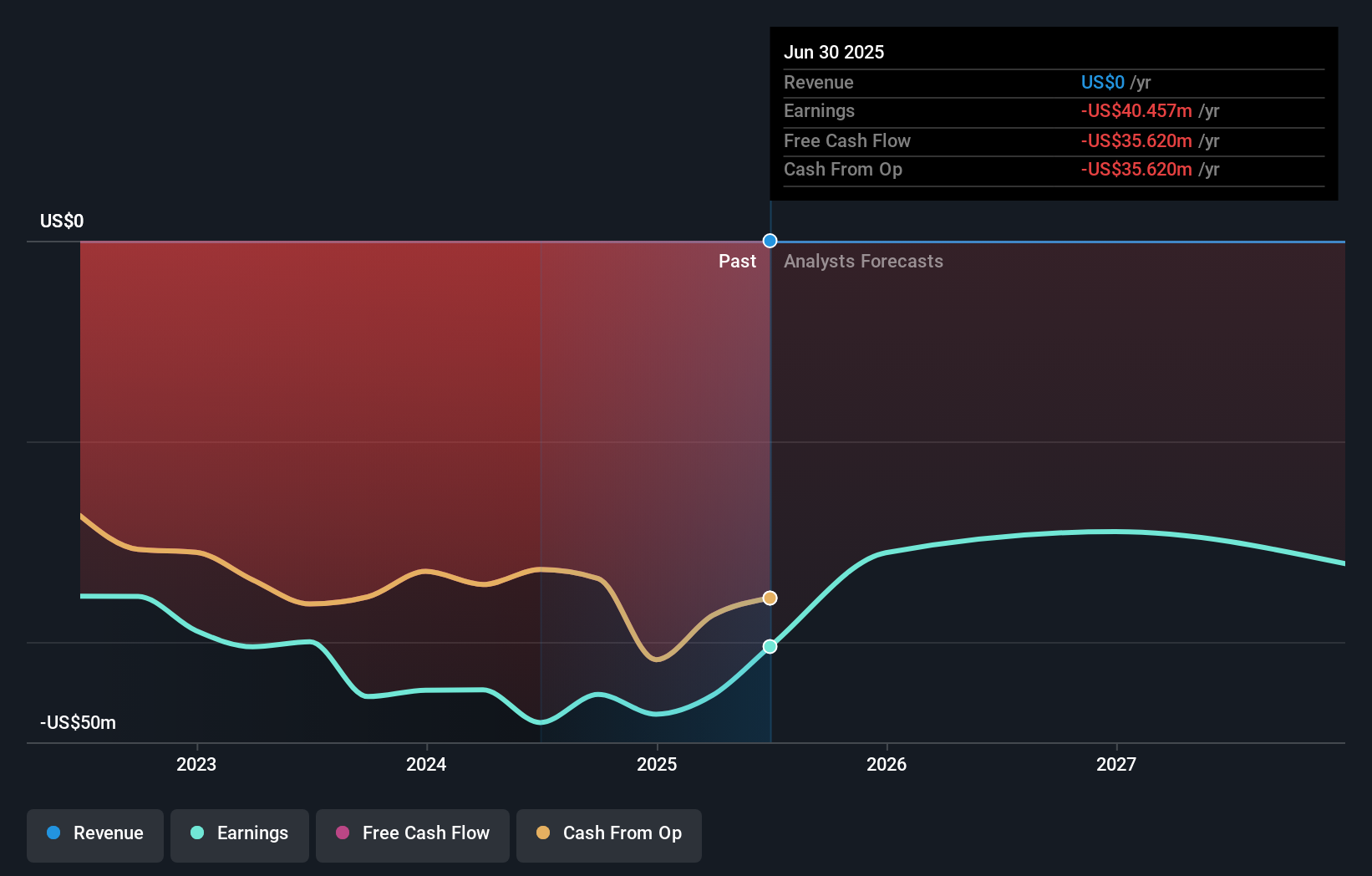- United States
- /
- Biotech
- /
- NasdaqCM:GALT
Galectin Therapeutics Inc.'s (NASDAQ:GALT) market cap up US$42m last week, benefiting both individual investors who own 53% as well as insiders
Key Insights
- Significant control over Galectin Therapeutics by individual investors implies that the general public has more power to influence management and governance-related decisions
- A total of 25 investors have a majority stake in the company with 44% ownership
- Insiders have bought recently
A look at the shareholders of Galectin Therapeutics Inc. (NASDAQ:GALT) can tell us which group is most powerful. We can see that individual investors own the lion's share in the company with 53% ownership. Put another way, the group faces the maximum upside potential (or downside risk).
While individual investors were the group that reaped the most benefits after last week’s 15% price gain, insiders also received a 21% cut.
Let's take a closer look to see what the different types of shareholders can tell us about Galectin Therapeutics.
Check out our latest analysis for Galectin Therapeutics

What Does The Institutional Ownership Tell Us About Galectin Therapeutics?
Many institutions measure their performance against an index that approximates the local market. So they usually pay more attention to companies that are included in major indices.
We can see that Galectin Therapeutics does have institutional investors; and they hold a good portion of the company's stock. This implies the analysts working for those institutions have looked at the stock and they like it. But just like anyone else, they could be wrong. When multiple institutions own a stock, there's always a risk that they are in a 'crowded trade'. When such a trade goes wrong, multiple parties may compete to sell stock fast. This risk is higher in a company without a history of growth. You can see Galectin Therapeutics' historic earnings and revenue below, but keep in mind there's always more to the story.

It looks like hedge funds own 9.2% of Galectin Therapeutics shares. That's interesting, because hedge funds can be quite active and activist. Many look for medium term catalysts that will drive the share price higher. Richard Uihlein is currently the largest shareholder, with 16% of shares outstanding. In comparison, the second and third largest shareholders hold about 9.2% and 3.4% of the stock. Additionally, the company's CEO Joel Lewis directly holds 1.3% of the total shares outstanding.
On studying our ownership data, we found that 25 of the top shareholders collectively own less than 50% of the share register, implying that no single individual has a majority interest.
Researching institutional ownership is a good way to gauge and filter a stock's expected performance. The same can be achieved by studying analyst sentiments. There is a little analyst coverage of the stock, but not much. So there is room for it to gain more coverage.
Insider Ownership Of Galectin Therapeutics
While the precise definition of an insider can be subjective, almost everyone considers board members to be insiders. Management ultimately answers to the board. However, it is not uncommon for managers to be executive board members, especially if they are a founder or the CEO.
Most consider insider ownership a positive because it can indicate the board is well aligned with other shareholders. However, on some occasions too much power is concentrated within this group.
It seems insiders own a significant proportion of Galectin Therapeutics Inc.. Insiders own US$62m worth of shares in the US$302m company. This may suggest that the founders still own a lot of shares. You can click here to see if they have been buying or selling.
General Public Ownership
The general public, mostly comprising of individual investors, collectively holds 53% of Galectin Therapeutics shares. This level of ownership gives investors from the wider public some power to sway key policy decisions such as board composition, executive compensation, and the dividend payout ratio.
Next Steps:
It's always worth thinking about the different groups who own shares in a company. But to understand Galectin Therapeutics better, we need to consider many other factors. Consider for instance, the ever-present spectre of investment risk. We've identified 4 warning signs with Galectin Therapeutics (at least 2 which are concerning) , and understanding them should be part of your investment process.
Ultimately the future is most important. You can access this free report on analyst forecasts for the company.
NB: Figures in this article are calculated using data from the last twelve months, which refer to the 12-month period ending on the last date of the month the financial statement is dated. This may not be consistent with full year annual report figures.
New: Manage All Your Stock Portfolios in One Place
We've created the ultimate portfolio companion for stock investors, and it's free.
• Connect an unlimited number of Portfolios and see your total in one currency
• Be alerted to new Warning Signs or Risks via email or mobile
• Track the Fair Value of your stocks
Have feedback on this article? Concerned about the content? Get in touch with us directly. Alternatively, email editorial-team (at) simplywallst.com.
This article by Simply Wall St is general in nature. We provide commentary based on historical data and analyst forecasts only using an unbiased methodology and our articles are not intended to be financial advice. It does not constitute a recommendation to buy or sell any stock, and does not take account of your objectives, or your financial situation. We aim to bring you long-term focused analysis driven by fundamental data. Note that our analysis may not factor in the latest price-sensitive company announcements or qualitative material. Simply Wall St has no position in any stocks mentioned.
About NasdaqCM:GALT
Galectin Therapeutics
A clinical stage biopharmaceutical company, engages in the drug research and development to create new therapies for fibrotic, cancer, and other diseases.
Slight risk with imperfect balance sheet.
Market Insights
Community Narratives




